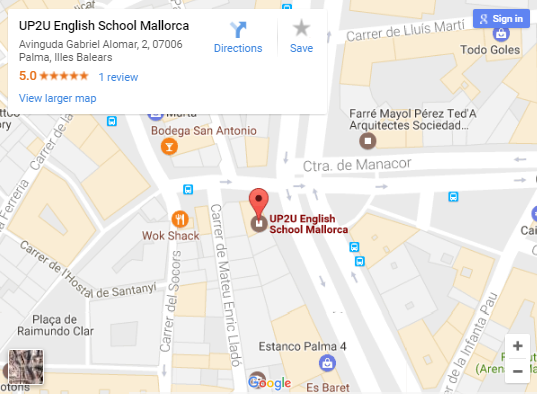- learning a language can be complicated: we aim to make it as simple as possible
- Learning a language can often be boring: we try to make it as enjoyable as possible
- Learning a language is often a long process: we want to make it as quick as possible
Step 1: Listen and speak English
Real life situations in the classroom
is method where yoWe are the only English school in Vitoria with this method where you will learn in a natural and easy manner, first to understand and speak, and then to read and write English.
- Our English classes are dynamic, just like the real world. We talk quickly because that is how it is done in real life situations.
- All our teachers are native speakers. A variety of accents is also important, so we rotate teachers to help you get the most out of your course with us. Dialogue between the teacher and student is conducted in a question-answer format.
- Classes are like training sessions in which the teacher explains the meaning of each new word (along with grammatical structures) and the student answers in full sentences using the new vocabulary, and putting the phrase blocks in context, “WITHOUT TRANSLATING – WITHOUT THINKING.”
- Our Method ensures that pronunciation is learnt correctly. English is not written phonetically, this method allows for new vocabulary to be memorised as pronounced, avoiding confusion when referring to the written text. This greatly helps in avoiding the all-too-common mistake of pronouncing as is read. Teachers constantly correct pronunciation errors in order to obtain a correct language learning.
Step 2: Revision and assimilation
The best way to remember something is to repeat it, so the best way of learning is through repetition.
The same words and grammatical structures are reviewed in subsequent lessons, they will be heard and used repeatedly in different questions and contexts, so that during the course the material is positively assimilated. All that seemed difficult at first, becomes less so the second time and so on. As students advance through the units, they respond ever more quickly, learning to speak English directly WITHOUT THINKING AND THEN TRANSLATING.
Step 3: read and write
When students have grasped the material and use it correctly and spontaneously in class, the teacher goes on to do reading, dictation and grammar exercises.
A very important aspect in reading, dictations and grammar is the speed. With our method, students adapt to the natural pace of the teachers and not vice versa, as happens in real life. This way the student NEITHER THINKS NOR TRANSLATES into their own language when speaking, reading and writing.
Speak Your Mind Units
During our classes, the teacher gives priority to dialogue. In the evolution of the course, reading and writing skills are also developed. Speak Your Mind has a book for each course.
The books are very useful in that each student has the opportunity to review any questions, or refresh the content learned in class. The books include two CDs to review pronunciation at home.
The Speak Your Mind Method, is made up of 17 units and each unit consists of 10 lessons.
Unit examples:
Unit 1 | Unit 2 | Unit 4 | Unit 6 | Unit 8
After an accurate placement test assessing the abilities of each pupil paying close attention to spoken English, we establish the appropriate level for each person. The levels are specified as indicated in the above “Unit” sections.

books
Webpage URL



